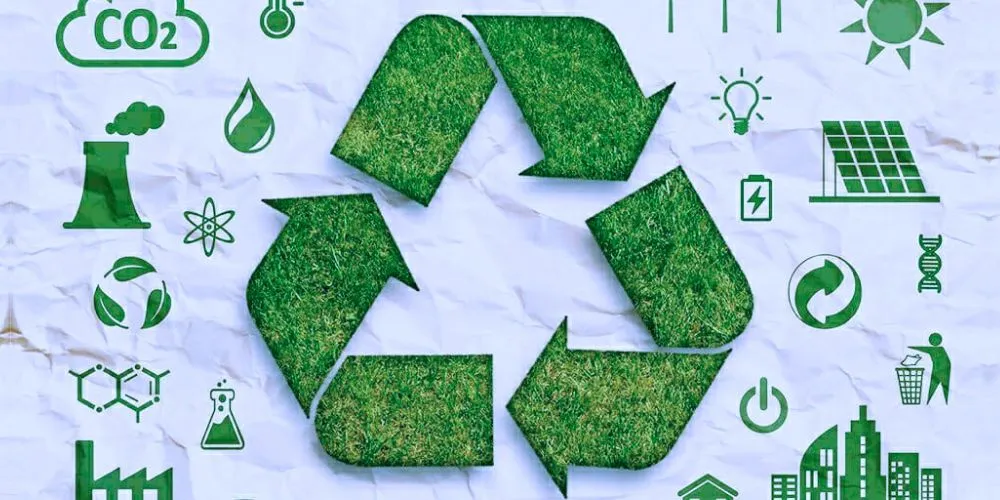Sustainable fashion has emerged as a transformative force in the fashion industry, reshaping how clothing is designed, produced, and consumed. This article delves into the comprehensive world of sustainable fashion, exploring its fundamental principles, diverse methodologies, key advantages, notable applications, and the challenges it addresses within the dynamic landscape of global fashion and environmental consciousness.
Unveiling Sustainable Fashion
Sustainable fashion, often called eco-fashion or ethical fashion, is a holistic approach to clothing production that prioritizes environmental and social responsibility. It encompasses the entire lifecycle of a garment, from the sourcing of materials to production, distribution, and end-of-life considerations. The primary goal is to minimize the fashion industry’s environmental impact while promoting ethical practices that respect the rights and well-being of workers in the supply chain.
Key Components of Sustainable Fashion
Understanding the key components of sustainable fashion is essential for comprehending its scope and impact:
- Ethical Sourcing of Materials: Sustainable fashion begins with the ethical sourcing of materials. It involves using environmentally friendly fabrics, such as organic cotton, hemp, or recycled materials, and ensuring fair labor practices in producing these materials.
- Circular Fashion Design: Circular fashion design focuses on creating clothing with a minimal environmental footprint. It includes designing garments for durability, recyclability, and ease of disassembly, promoting a closed-loop system where materials are reused or recycled at the end of their life.
- Fair Labor Practices: Ensuring fair labor practices throughout the supply chain is crucial to sustainable fashion. It involves providing safe working conditions, fair wages, and respecting the rights of workers involved in the production process.
Methodologies of Sustainable Fashion
Sustainable fashion employs various methodologies to revolutionize the fashion industry:
- Slow Fashion Movement: The slow fashion movement advocates a shift away from fast-paced, disposable fashion trends. Instead, it promotes timeless designs, quality craftsmanship, and durable materials, encouraging consumers to invest in pieces that have a longer lifespan.
- Upcycling and Repurposing: Upcycling and repurposing involve transforming old or discarded clothing into new, stylish pieces. This sustainable practice reduces textile waste and encourages creativity in fashion design.
- Transparency in the Supply Chain: Transparency in the supply chain is a key methodology sustainably. Brands that disclose information about their sourcing, production processes, and environmental practices empower consumers to make informed choices about the products they purchase.
Advantages of Sustainable Fashion
The adoption of sustainable fashion brings forth a multitude of advantages, reshaping the fashion industry and consumer choices:
Environmental Conservation through Responsible Practices
One of the primary advantages of sustainable fashion is its contribution to environmental conservation. Sustainable fashion minimizes its environmental impact by promoting responsible practices such as eco-friendly materials, reduced water usage, and minimized carbon emissions.
Ethical and Social Responsibility in the Fashion Industry
Sustainable fashion strongly emphasizes ethical and social responsibility within the fashion industry. Fair labor practices, safe working conditions, and the protection of workers’ rights contribute to a more humane and socially conscious approach to fashion production.
Quality and Durability for Long-Term Wardrobe Investments
Sustainable fashion encourages quality and durability in clothing, fostering long-term wardrobe investments. Garments designed for longevity reduce the need for frequent replacements, promoting a shift away from the disposable culture prevalent in fast fashion.
Consumer Empowerment through Informed Choices
Sustainable fashion empowers customers to make informed choices about their clothing purchases. By providing transparency in the supply chain and ethical sourcing practices, consumers can align their values with their fashion preferences, supporting brands that prioritize sustainability.
Applications of Sustainable Fashion
Sustainable fashion finds applications across diverse fashion contexts, influencing how designers, brands, and consumers engage with clothing:
Eco-Friendly Fashion Brands Leading the Movement
Eco-friendly fashion brands are at the forefront of the sustainable fashion movement. These brands prioritize eco-conscious materials, ethical production practices, and transparency, setting new standards for the industry and inspiring others to follow suit.
Sustainable Fashion Weeks Showcasing Ethical Designs
Sustainable fashion weeks have emerged as platforms for showcasing ethical designs and promoting sustainable practices. These events highlight designers prioritizing eco-friendly materials, circular design principles, and fair labor practices, influencing the industry’s direction.
Second-Hand and Vintage Fashion Contributing to Circular Practices
Second-hand and vintage fashion contribute to circular fashion practices. The resale market extends the lifespan of clothing items, decreasing the demand for new production and minimizing the environmental impact associated with the creation of new garments.
Sustainable Capsule Collections Setting Trends
Sustainable capsule collections are setting trends in the fashion industry. Designers create limited, purposeful collections emphasizing timeless designs, quality craftsmanship, and sustainable materials, encouraging consumers to invest in thoughtful, lasting pieces.
Challenges in Sustainable Fashion
While the advantages are evident, the practice of sustainable fashion faces its own set of challenges. Addressing these challenges is important for realizing the full potential of sustainable fashion:
High Initial Costs and Limited Accessibility
One of the challenges in sustainable fashion is the perception of high initial costs and limited accessibility. Eco-friendly materials and ethical production practices can increase production costs, making sustainable fashion less accessible to certain consumer demographics.
Need for Industry-Wide Standardization
The need for industry-wide standardization poses a challenge to sustainable fashion. Establishing clear and universally accepted standards for eco-friendly materials, fair labor practices, and transparent supply chains is essential for ensuring credibility and accountability across the industry.
Balancing Aesthetics with Sustainability
Balancing aesthetics with sustainability is a challenge for designers in the sustainable fashion space. Striking a harmonious blend of style and eco-consciousness requires innovative approaches to design that appeal to a broad consumer base.
Future Trends in Sustainable Fashion
As technology continues to evolve, future trends in sustainable fashion point toward advancements that further enhance its capabilities:
Innovations in Sustainable Materials and Textiles
Innovations in sustainable materials and textiles are a future trend sustainably. Developing new, eco-friendly fabrics, such as lab-grown leather and recycled fibers, can revolutionize the industry’s approach to material sourcing.
Technology-Driven Transparency in Supply Chains
Technology-driven transparency in supply chains is on the rise. Blockchain and other technologies are being explored to provide consumers with real-time information about the entire lifecycle of a garment, ensuring transparency and traceability in the production process.
Collaborations between Sustainable and Mainstream Fashion
Collaborations between sustainable and mainstream fashion are becoming more prevalent. Partnerships between eco-conscious brands and mainstream retailers introduce sustainable practices to a broader audience, encouraging wider adoption of environmentally friendly fashion.
Sustainable Fashion Education and Advocacy
Sustainable fashion education and advocacy are gaining importance. Educational initiatives and advocacy campaigns aim to raise awareness about sustainable fashion practices, influencing industry professionals and consumers to make ethical and environmentally responsible choices.
Conclusion
Sustainable fashion is a transformative force in the fashion industry, challenging traditional norms and reshaping how we approach clothing. Its ability to blend elegance with environmental and social responsibility positions it as a beacon of change in an industry often condemned for its environmental impact. While challenges persist, ongoing advancements and future trends indicate a dynamic and promising future for sustainable fashion, with applications extending into new frontiers of eco-friendly elegance and ethical chic.









